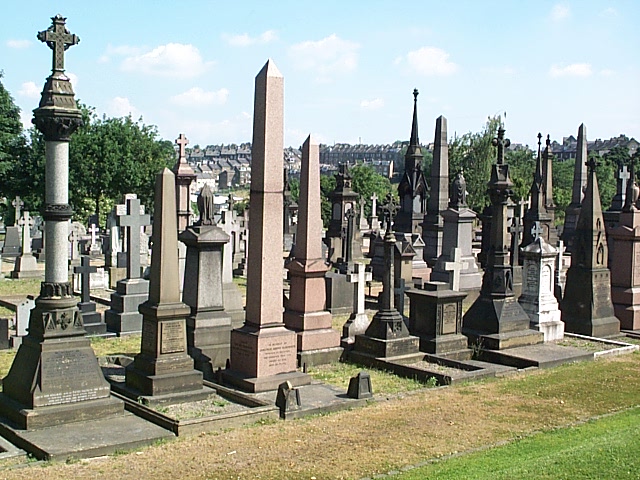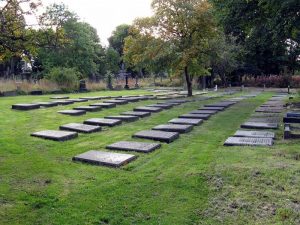The monumental gates are broad. The pillared span admits respectable citizens, the high and the low, captains of industry and the foot soldiers; the wealth makers of money and markets, the wealth creators born to necessity and toil. The gradations of the community of the living, from privileged prosperity to servile dependency, are displayed plainly here in the domain of the dead. Treelined avenues, bordered by the splendour of Egyptian mausoleums, gothic tombs and spired vaults reaching to heaven, house the relics of Bradford family dynasties.
These give way through narrow side paths to a stratified social landscape, the lieutenants of the masters, the servants of the great, police and policed, overseers and overseen. Further, in overgrown corners and inaccessible plots lie the remains, the names time-erased from modest head stones and from history, of the legions who fuelled the machine of Victorian progress, the labouring bodies of the children, women, men, that were fed into the mills, or confined in the dark damp basements or airless attics of the airy mansions, the great halls and grandiloquent grounds that cossetted and encompassed enchanted lives.
And here, in an unremarked plot, on the perimeter, the Quaker burial ground maps a vision of a different world. Uniform grey gravestones laid flat where “no man is above another”, where all are equal in life and death. But, in truth, the only leveller is death.
Terry Wassall


